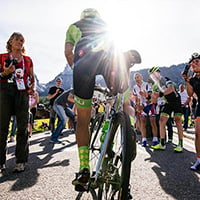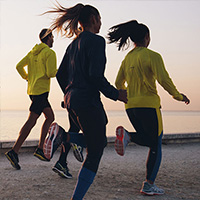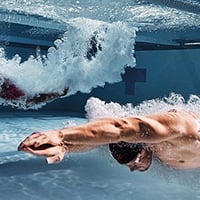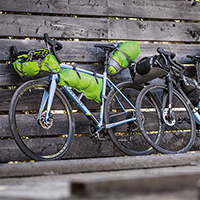Cycling legwear guide
Padded cycling legwear is a blessing to all cyclists because it reduces discomfort and increases riding comfort – be it for the commute, the bike trip or the longer weekend tour.
So, if you want to know what's special about cycling trousers and shorts, what to look for when buying them and which bottom options are best suited to your riding style, you've come to the right place.
Just scroll down to find out more, or jump straight to a topic by clicking on one of the following links:
Benefits: why do I need padded cycling tights?
While cycling, your butt takes most of the weight, and the movement of your legs adds friction. So, it's no wonder that after a while your backside might start to hurt. If you want to ride longer distances, wearing a good pair of cycling bottoms can make the difference between joy and sorrow, because the padding:
- Distributes the pressure
- Absorbs shocks from poor road conditions
- Keeps you on the saddle optimally
- Helps to avoid friction
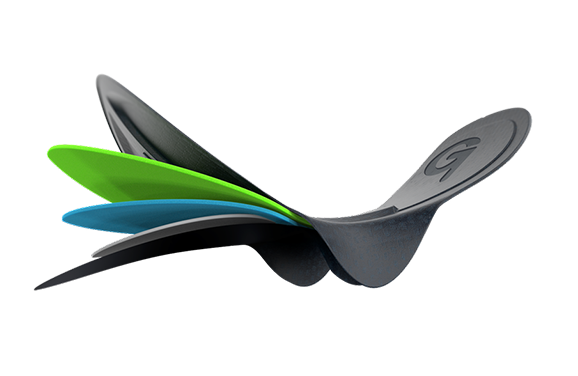
Top tip: sitting comfort is always a combination of cycling legwear and saddle. First of all, you should make sure the saddle itself fits your buttocks and your riding position and is correctly adjusted – otherwise even the best cycling bottoms can't help.
Features: What distinguishes cycling legwear from 'normal' everyday clothing?
High-quality cycling legwear is mainly made of fast-drying, breathable and stretchy elastane that gives you freedom of movement. Some models offer an additional compression effect.
Ideally, the seat area should be made of a more abrasion-resistant material to prevent pilling. Cycling legwear for the cooler season should have denser fabric at the front for wind protection and be higher at the back to keep your kidneys warm.
At this point, we must mention bib shorts, which are an alternative to cycling bottoms with stretchy waistbands. These provide particularly good support, but can also prove impractical, something we'll explain in more detail.
Cycling shorts usually have rubberised or silicone-printed leg cuffs to prevent them from riding up while you pedal. Ideally, the leg cuff, like the waistband, is tight enough to provide support but not so tight that it constricts. Keeping the cuffs wider can help here.
In general, the cut of a good pair of cycling tights or trousers is optimised for the riding position on the bike – and not while standing (please bear this in mind when trying them on). Special manufacturing techniques can increase freedom of movement and come into their own when paired with specific materials. When using seams, however, manufacturers should go for flat seams and position them where there can be as little friction as possible. Some brands also offer almost-seamless models.
Classic cycling legwear is close-fitting and padded in the seat area. The close fit not only has aerodynamic advantages, but it keeps the padding in place and avoids wrinkling, so friction is minimised.
"Normal clothing" like a pair of jeans that you might wear to work or to a picnic are usually inflexible or loose, which can cause friction. They can also wear out quickly at the crotch and you don't necessarily want to sweat all over them.
What types of cycling legwear are available and how do I find the right type for me?
The choice of cycling bottoms is endless, so you should look for a pair based on the following three criteria:
- Intended use
- Season
- Comfort
Let's take a closer look at each one:
1. Intended use: What type of cyclist am I?
Would you rather sit stretched out on a road bike or upright on a touring bike? Is mountain biking your thing, do you want to go on a multi-day bikepacking tour or do you only ride a few kilometres a day through town?
Above all, cycling clothing brands have different models for different riding styles. The differences lie in both the overall design and the padding.
Specifically, it looks like this:
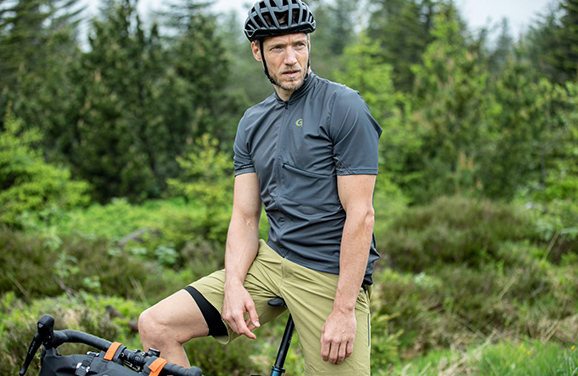
For mountain biking or touring, cycling legwear usually consist of two pieces: padded, usually lighter, inner tights and looser-cut, unpadded bike shorts as outerwear. For MTB, the outer shorts can be a bit more robust and baggy, while for touring, details such as trouser pockets are also common as additional storage options.
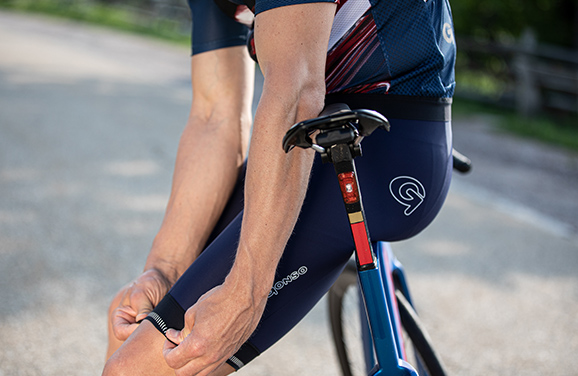
If you want to be sporty and aerodynamics are important, then classic, tight-fitting padded cycling tights with a sewn in pad are the best choice. An integrated seat pad is simply unbeatable for fit and support.
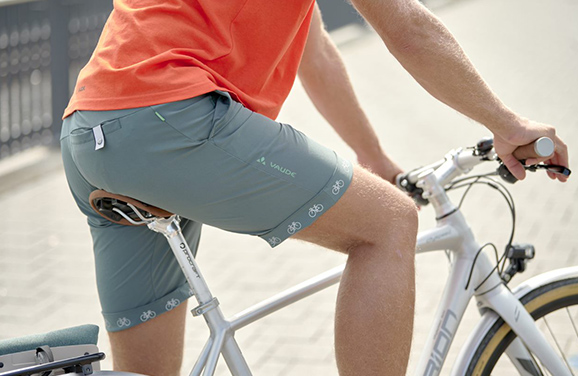
For everyday rides, there are also special padded cycling pants that are less bulky and can be worn under normal clothing. They are best for shorter distances.
Sitting positions: some manufacturers have responded to different anatomical needs, which are also related to intended use, with different pad designs, because the pad is at the heart of classic cycling legwear.
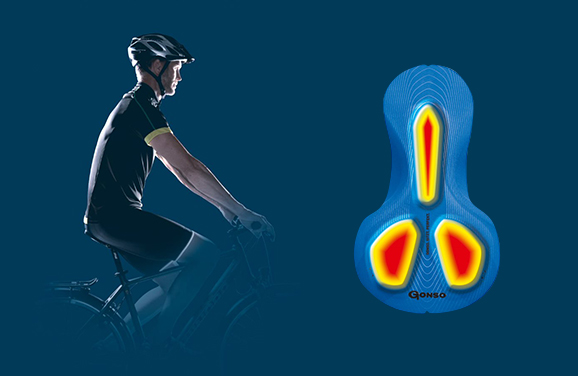
Padding for an upright seating position, for example, is more compressed in the sit bone area. This is ideal for commuting or touring.
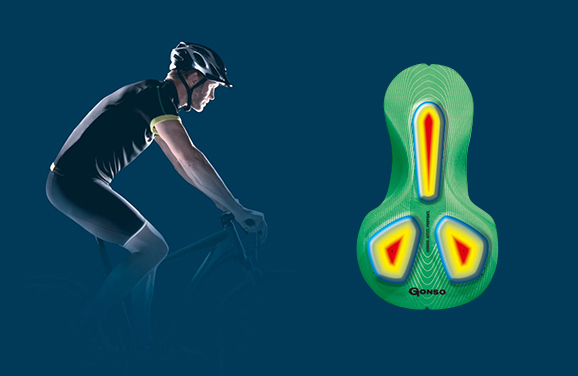
For a moderately sporty position, for gravel biking for example, cycling apparel brands often offer a balanced pad design.
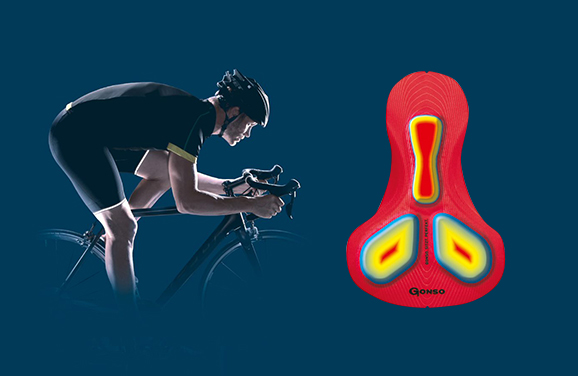
The part of the garment that covers the perineal area, or pelvic floor, is reinforced for a very stretched-out 'aero' position, for example for fast rides on a road bike.
Individual preferences: overall, there are thicker, softer and wider cushions available, as well as narrow and firm ones. Keep in mind that thick cushions are not necessarily more comfortable or automatically suitable for longer distances.
Some people can also get along wonderfully with firm, narrow cushions. Factors that play into personal preference can also be one's own weight and condition.
Other choices: certain manufacturers offer different cushion widths for different seat bone distances.
Materials: nowadays, seat pads are made of synthetics, making them breathable and easy to clean. Some cushions are also additionally anti-bacterially treated.
2. Season: What weather am I riding in?
You can cycle all-year round and there is cycling legwear for every weather condition:
Warm/dry: in addition to classic, padded cycling bottoms that end just above the knee, there are shorter cycling shorts for very hot days or some with mesh inserts for better ventilation. UV protection also plays its part.
Cold/wet: for very cold days, there is long thermal legwear that is usually brushed on the inside or lined with fleece. For sub-zero temperatures and windy, wet weather, these winter tights also have a wind and water-repellent coating. In extreme cases, you can also combine them with rain or softshell trouserrs or shorts. Winter cycling legwear is available with and without padding. In the latter case, you simply wear a pair of padded shorts underneath.
Between seasons: there are also solutions for the transitional period (around ten degrees Celsius) in the form of padded three-quarter-length bottoms. These keep the knees warm.
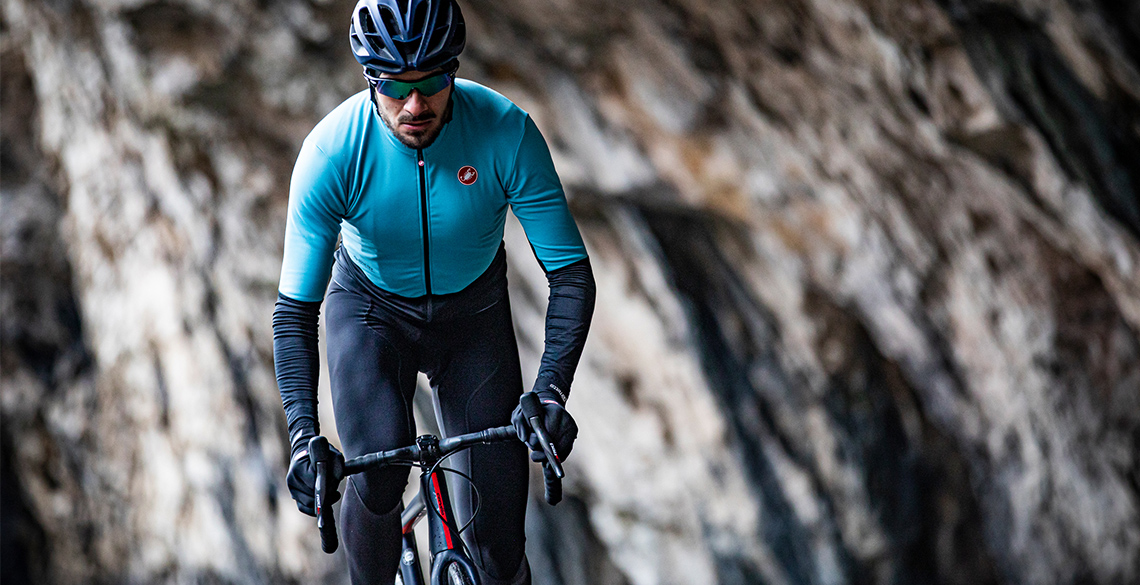
3. Comfort: how do you feel the most comfortable?
Of course, which cycling legwear you choose also depends on what you feel most comfortable in.
Gender-specific designs: also note there are different cycling legwear for men, women and children. Here too, conscientious manufacturers have taken into account different anatomical requirements in terms of fit and padding. This doesn't mean, however, that a woman cannot wear a pair of men's cycling tights, though we probably wouldn't recommend it.
General preferences: overall, men tend to go for bib shorts, while women try waistband legwear first. Bib shorts hold the padding in place better and warm the kidney area, but prove impractical for women when going to the toilet because they have to take off their tops.
'Clever' bib shorts for women: some brands offer bib shorts specifically for women with solutions to separate the top and bottom with a zip of magnetic clip. Some also simply use particularly elastic material and so a pair of bib shorts can simply be pulled down while squatting.
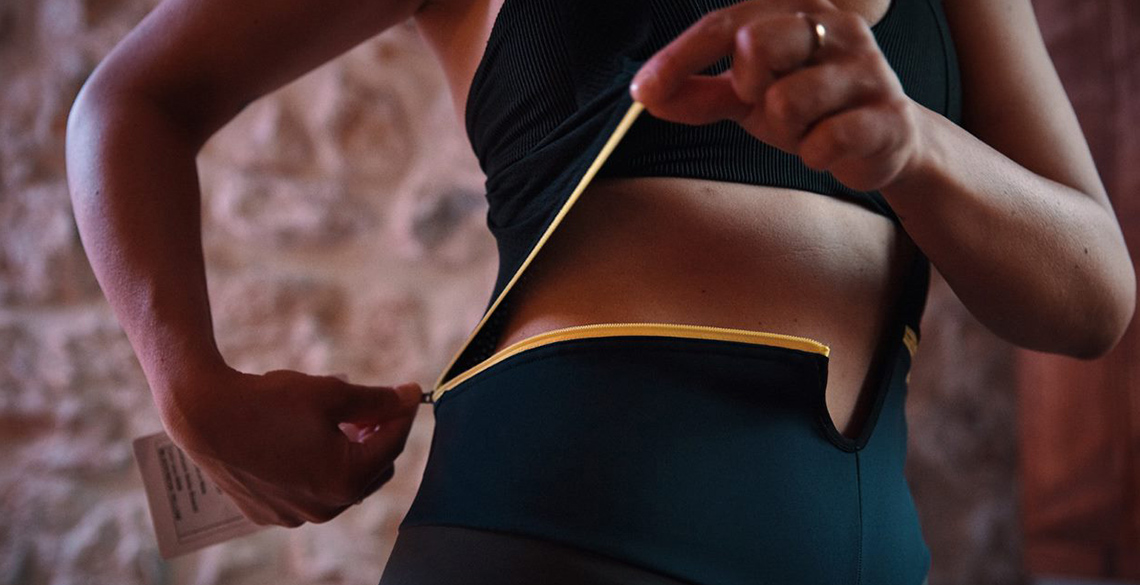
Was that clear?
Well, that was our overview of cycling legwear! Now you know what types of options are out there and what they're good for.
You're sure to find one or two models to suit you, and our shop offers a large selection of brands. Simply filter by your intended use and read the product description to determine whether the tights or trousers suit your riding style or not. In the end, it's all about trying them out, because how the shorts ultimately perform will only become clear after several rides. Remember, everyone has a different perception of comfort. If you already have cycling legwear garments, it never hurts to have a few pairs in rotation. And if you've never worn them before, we hope this guide has made you curious and you'll give cycling legwear a try. We're sure you'll notice the difference and won't ever want to ride without them again.
FAQ
Padded cycling legwear should be tight-fitting – without constricting – and shouldn't wrinkle. However, if you don't like the look, you can choose a combination of padded inner tights and outer bike shorts regardless of which bike you're riding. This can be good if you know your route will take you through the city or to a cafe or beer garden.
In general, classic black cycling tights are more discreet because they're more opaque and your contours aren't as visible.
One trick to increase comfort on the saddle is to use 'chamois' cream in combination with padded cycling legwear. Chamois cream also helps to reduce friction and has a soothing effect if sore spots develop, for example on multi-day tours. Various brands have developed creams specifically for their cycling garments, or you can try Vaseline, milking fat or deer tallow first.
NOTHING! The pad should be in direct contact with the skin. This takes some getting used to, but cycling legwear is designed to work only when worn directly against the skin. Adding another layer of fabric in the form of underpants would again increase friction. Chamois cream also works better when in direct combination with the pad than with normal trousers.
Hygiene is very important with padded cycling bottoms. Due to direct skin contact in combination with sweat and possibly chamois and sun cream, bacteria can easily form or the synthetic fabric can deteriorate. It's therefore wise to rinse cycling garments at least briefly after use, for example on multi-day tours. Otherwise, cycling legwear, like most functional clothing, should be washed gently in the washing machine. Always follow the manufacturer's instructions. Not least, for this reason, it's a good idea to have several pairs of padded garments in your collection – after all, you have more than just one pair of jeans, right?






























